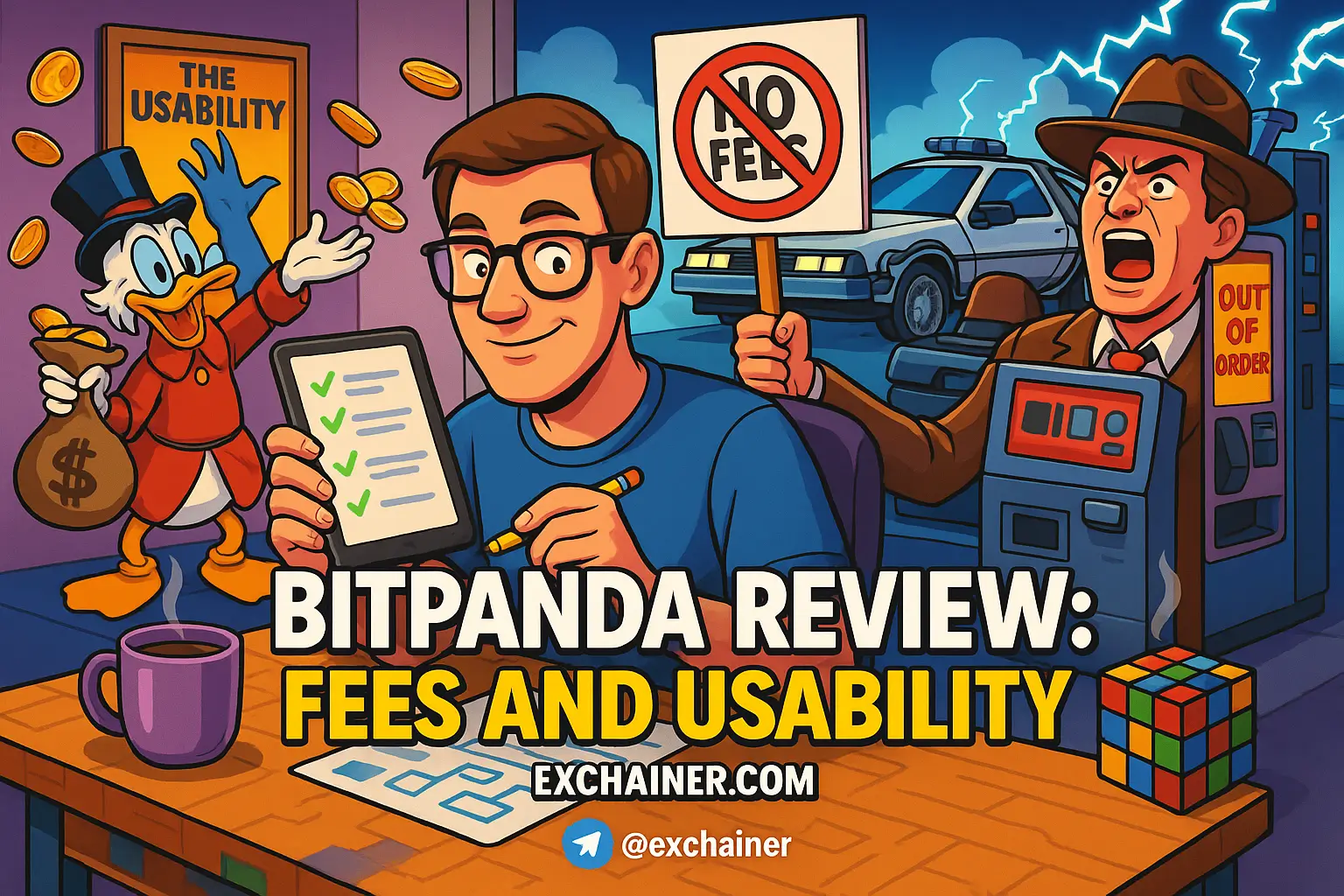Mastering the process of balancing your crypto and fiat finances has never been more important. As the digital currency space is gaining momentum, understanding how to effectively manage both types of assets can lead to sustainable growth and risk mitigation. In this guide, we'll break down the essentials of cryptocurrency basics, the importance of portfolio diversification, and practical steps you can take to strike the right balance between crypto and fiat assets. Whether you're a beginner dipping your toes into the world of digital currencies or someone with a bit of experience looking to refine your strategy, this comprehensive resource is designed for you.
The cryptocurrency landscape is vibrant and full of potential, but it also comes with its own set of risks and volatility. Fiat currencies, on the other hand, offer stability and familiarity, making them reliable for everyday transactions. By understanding how to balance your investments in these two realms, you can harness the benefits of both systems. Why engage with the complexities of maintaining a diverse portfolio? Because keeping your finances versatile can help guard against market fluctuations, avoid potential losses, and create opportunities for growth.
So, are you ready to dive into the world of crypto-fiat balance? Let’s explore some essential strategies and insights that will help guide your journey to financial equilibrium.
Understanding the Crypto-Fiat Ecosystem
When we talk about the crypto-fiat ecosystem, we're looking at two fundamentally different systems. Fiat currencies, like the US dollar (USD), Euro (EUR), and Japanese Yen (JPY), derive their value from government regulations and the economic dynamics of the nations that issue them. Their stability, backed by central banks, makes them the go-to option for most everyday transactions and savings.
In contrast, cryptocurrencies such as Bitcoin and Ethereum function on decentralized networks powered by blockchain technology. They allow for immediate, cross-border transfers without intermediaries. However, this freedom comes at a cost: price volatility.
Key Differentiators:
| Aspect | Fiat | Crypto |
|---|---|---|
| Control | Centralized (government) | Decentralized (blockchain) |
| Transaction Speed | Hours to days (bank transfers) | Minutes to seconds |
| Value Stability | High (inflation-targeted) | Volatile (market-driven) |
Understanding these characteristics is crucial as you navigate your investment strategies. By acknowledging the strengths and weaknesses of fiat and cryptocurrencies, you can form a clearer picture of how to allocate your assets effectively.
Core Strategies for Financial Equilibrium
Achieving a harmonious balance between your crypto and fiat holdings is all about creating a strategic framework. Here are some key strategies you can implement for financial stability.
Asset Allocation Framework
One of the first steps is finding the right asset allocation that suits your risk appetite. Here’s a practical breakdown:
-
Risk-Adjusted Ratios: A common guideline is to allocate 60-80% of your portfolio to fiat, which provides stability, while dedicating 20-40% towards cryptocurrencies to capture growth potential.
-
Sector Diversification: If you decide to invest in cryptocurrency, consider splitting your holdings among different types:
- Store-of-value: Bitcoin (BTC)
- Smart contract platforms: Ethereum (ETH), Solana (SOL)
- Stablecoins: Tether (USDT), USD Coin (USDC)
Utilizing these categories allows for diversification while capitalizing on various opportunities in both fiat and digital assets.
Stablecoin Bridging
Stablecoins serve as a bridge between fiat and crypto worlds. Pegged to fiat, these digital currencies maintain a stable value, making them great for transactions. Here’s why they are essential:
- ✅ Reduced volatility for essential payments like payroll and invoices.
- ✅ Cost-effective cross-border settlements (usually 0.1-1% fees, compared to traditional banking fees of 3-5%).
- ✅ Liquidity pools that provide opportunities for yield generation.
Pro Tip: Consider rotating between multiple stablecoins, such as Tether, Dai, or TrueUSD, to mitigate issuer risk.
Advanced Treasury Management
For businesses or individuals managing larger crypto-fiat flows, more advanced treasury management strategies come into play.
Implement Multi-Signature Wallets
Multi-signature wallets enhance security by requiring multiple keys to authorize transactions, reducing the risk of losing funds due to a single-point failure.
Leverage Hedging Instruments
Using financial instruments can protect your investments:
- Futures Contracts: Lock in Bitcoin prices for a set period, usually 3-6 months.
- Options: Purchase put options on Ethereum to safeguard against market downturns.
- Staking: Earn interest (often between 3-8% APR) on idle crypto assets through staking opportunities.
These strategies not only enhance security but also give you flexibility in managing your portfolio during volatile market conditions.
Conversion Mechanics: Crypto-Fiat Exchanges
Converting crypto to fiat or vice-versa is essential for anyone navigating this dual finance world. Platforms like Binance offer some of the best resources for handling your conversions effectively.
- P2P Marketplace: Trade directly with users using various payment methods.
- Convert Feature: Execute near-instant swaps at live rate.
- Over-the-Counter (OTC) Desk: Perfect for executing larger trades (above $10,000) with minimal slippage.
Case Study: A freelance developer uses Binance Convert to automatically swap 30% of their crypto earnings to EUR, maintaining liquidity while keeping potential upside.
Risk Mitigation Protocols
Mitigating risks is crucial in both the fiat and crypto spaces, which can sometimes be highly unpredictable. Here are practical steps to consider:
- Circuit Breakers: Have protocols in place to pause crypto purchases if there is a drastic market drop (e.g., prices falling more than 15% in a day).
- Tax-Loss Harvesting: If you incur losses in crypto investments, offset them against capital gains in your portfolio.
- Cold Storage: Keep the majority of your crypto holdings (around 95%) offline using secure wallets like Ledger or Trezor.
- Maintain Fiat Reserves: Ensure you have three to six months of operating expenses in secure, FDIC-insured accounts.
These practices not only safeguard your assets but can also enhance your long-term strategy for balancing crypto and fiat finances.
Regulatory Navigation
Understanding regulatory implications is vital in the evolving world of crypto finance.
- KYC/AML: Ensure compliance with Know Your Customer (KYC) and Anti-Money Laundering (AML) regulations, especially when transactions exceed $1,000.
- GAAP Compliance: Use platforms like Bitwave or Cryptio to streamline your accounting and ensure compliance.
- VASP Licensing: Stay informed about registration requirements that vary by jurisdiction to remain compliant.
Navigating these regulations can seem challenging, but being proactive leads to better management of your finances.
Future-Proofing Your Strategy
As the financial landscape evolves, future-proofing your strategy becomes essential. Here are ways to stay ahead:
- CBDC Preparation: Keep an eye on central bank digital currencies like the digital euro or dollar.
- DeFi Integration: Consider allocating a small percentage of your portfolio (5-10%) to decentralized finance (DeFi) protocols such as Aave or Compound for algorithmic yields.
- Multi-Chain Exposure: Diversify across various blockchain ecosystems like Ethereum, Cosmos, and Polkadot.
By expanding your understanding of future innovations in both fiat and cryptocurrency realms, you can build a resilient portfolio that is adaptable to market changes.
The Balanced Investor’s Checklist
Before we part ways, here’s a friendly checklist to make sure you're on the right track:
- Quarterly Portfolio Rebalancing: Regularly adjust your allocation based on market conditions.
- Stablecoin Buffer: Maintain 10-15% of your crypto holdings in stablecoins to manage volatility.
- Geographic Diversification: Invest in a mix of regulated and emerging markets.
- Continuous Education: Stay informed about evolving regulations and market trends, preferably through reliable sources like Exchainer's Crypto 101.
Harmonizing innovations from the crypto space with the reliability of fiat allows investors to build portfolios that withstand the tests of time and market flux. Remember, your financial equilibrium isn’t static. Consider it a living system you must adjust as markets evolve.
Interested in diving deeper into understanding cryptocurrency and trading strategies? Explore more guides on Exchainer.com, where you can learn more about crypto, trading platforms, and the latest updates in the digital finance world:
Start your crypto journey today and build a balanced financial future!












